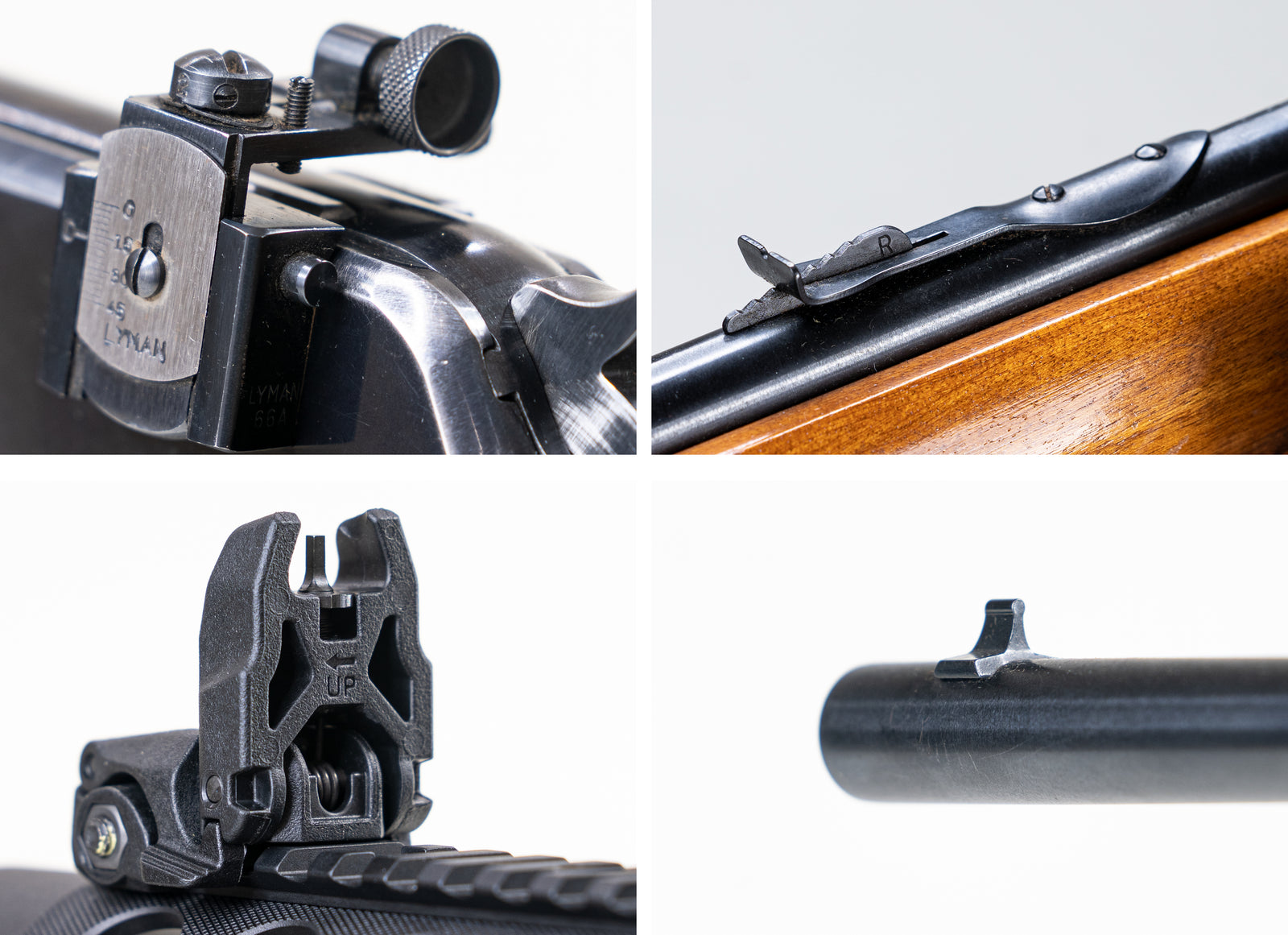On August 2nd of 2024 at the CMP Store in Camp Perry, I spent a bit of money on another rifle. Please don't tell my wife.
I had been hearing about air rifles more and more as the years have gone on. Earlier that week, I'd also been able to see Yusuf Dikec's strangely casual Olympic air pistol match on the TV. With just the right amount of peer pressure and great prices on a used Daisy 853 at the CMP Store, I couldn't help but pick one up.

This series of articles will explore the Daisy 853 and air rifles in general. Part 1 (this particular article) will look into the rifle itself. Shooting will come a little later.
About the Daisy 853
On the receipt, the rifle is marked as a Daisy M853U. I'm guessing the 'M' stands for 'model' and the 'U' stands for 'used'. Looking at the CMP Store site, the description of the rifle says "Used Daisy 853 with seals replaced and Chrono graphed to meet factory velocity requirements." Seems we're definitely working with a base Daisy 853, not some peculiar variant.
(I'm new to air rifles, so I'll probably obsess over the small details like this until I get comfortable with the terminology)

The Daisy 853 is a .177" (4.5mm) caliber air rifle. It's designed for the 10m matches, and is considered to be quite precise in its price and weight class. It features an integral powerplant - a single pump pneumatic. Pellets are loaded via a straight-pull bolt action. The barrel is a 12 groove right hand twist Lothar Walther barrel made of steel. At its optimum, the rifle is listed with a muzzle velocity of 510 fps. Anecdotally, I'm reading accounts with muzzle velocities in the upper 400s, with 510 being a rarely attained goal. The rifle delivers 4.5 ft-lbs of energy.
The low fpe of this rifle makes it unsuitable for hunting of any sort. Even small birds require around twice the energy. That won't matter when I just want to punch paper, but it's good to keep in mind. It also means that creating an indoor shooting area will be easier than for a more powerful air rifle.
The rifle doesn't require a separate air tank to fill, nor CO2 canisters or anything of the sort. Instead, a level beneath the barrel is opened and closed once fully. The lever locks in place after it's closed once, preventing the rifle from being over-pumped. Daisy recommends oiling the filters in the pump once every 1000 rounds.
Loading and Firing the Daisy 853
According to the manual, the Daisy 853 is meant to be loaded and fired in a very particular order.
- Open the action
- Put on the safety
- Pump once
- Load
- Close the action
- Take off the safety
- Fire
It appears that putting the safety on and off might not be required for shooting, but I'll have to test that once I get the rifle and fire it. I had flown to and from the National Matches, so I'm having the rifle shipped from the CMP Store.

The bolt acts as a safety of its own, preventing the rifle from being fired when the bolt is completely open.
Do I need to clean an air rifle barrel? The barrel should be cleaned occasionally to take up the lead in the grooves. The barrel should also be cleaned periodically when completely new or after the pads are oiled, to gather up excess oil that makes its way into the barrel. Keeping the bore clear of obstructions is key in maintaining consistent velocity.
Sights
The Daisy 853's stock sights are fairly straightforward air rifle sights.
The front sight (factory standard) is a globe sight with replaceable inserts. The rear sight is an aperture sight with micrometer adjustments, though made out of plastic.

The rifle also includes an 11mm (3/8") rail. Quite a few rings can fit on that type of rail, so I've got the pick of the litter for mounting up an optic. The biggest issue will come from the height of the rings/scope. Due to the relatively close distance this rifle is meant to be used at, the scope's height is going to come into play. Lower is better here. If the scope sits 2" (center to center) above the bore, it'll be starting out at 17 MOA relative to the bore on a 10m target, and 34 MOA at 5m. That could eat up a lot of adjustment on a narrow-tube scope. Dropping the scope to 1" above the bore (center to center) reduces the offset to 8 1/2 MOA at 10m.
My Daisy 853
My rifle was in pretty good condition on the rack. Unfortunately, due to a shipping issue (which was later resolved), a new rifle had to be sent. This new rifle is quite lovely, and likely has a nicer stock than the one I picked.
This rifle has the monte carlo stock, which has a raised comb. The straight stock would instead have a flat comb (and difficulty with a good cheek weld).
Ultimately, my plan is to try both the iron sights and optics. I'll throw a variety of stuff up on the rifle to test out, and have three types of pellets so far to run: Stoeger Airguns X-Match 8.18gr, H&N Terminator 7.25gr, Merlin Match Plus 8.18gr.





Leave a comment (all fields required)